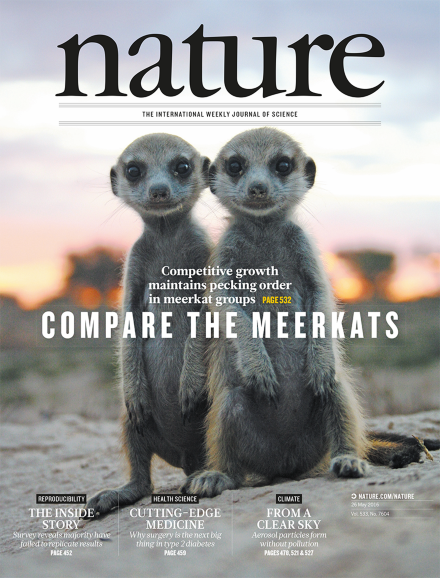Volume 533 Issue 7604, 26 May 2016
Editorial
World View
Research Highlights
Social Selection
Seven Days
News
Correction
News Feature
Comment
Books & Arts
Correspondence
Obituary
News & Views
Article
Letter
Technology Feature
-
Illuminating life's building blocks
Collection:

